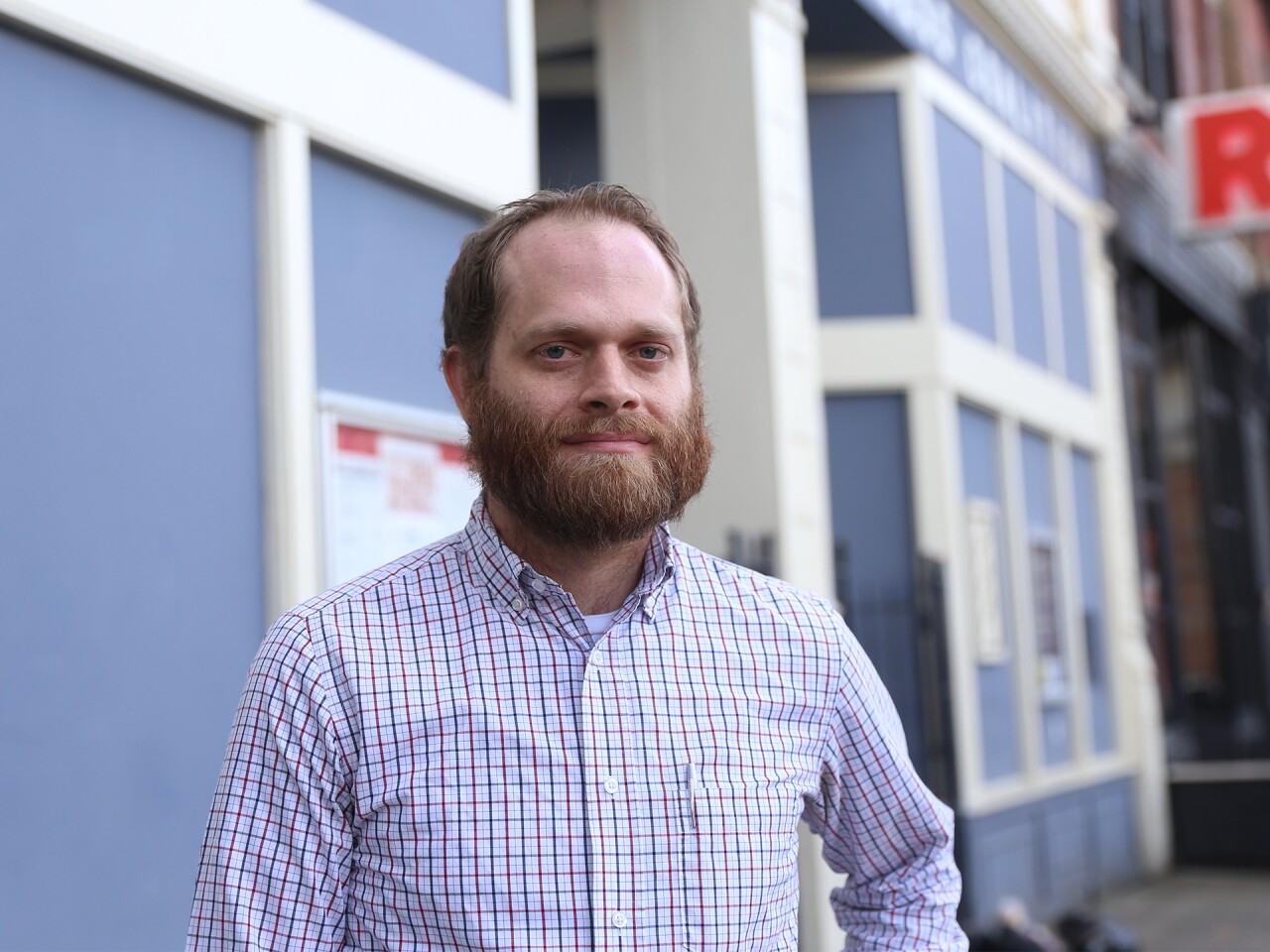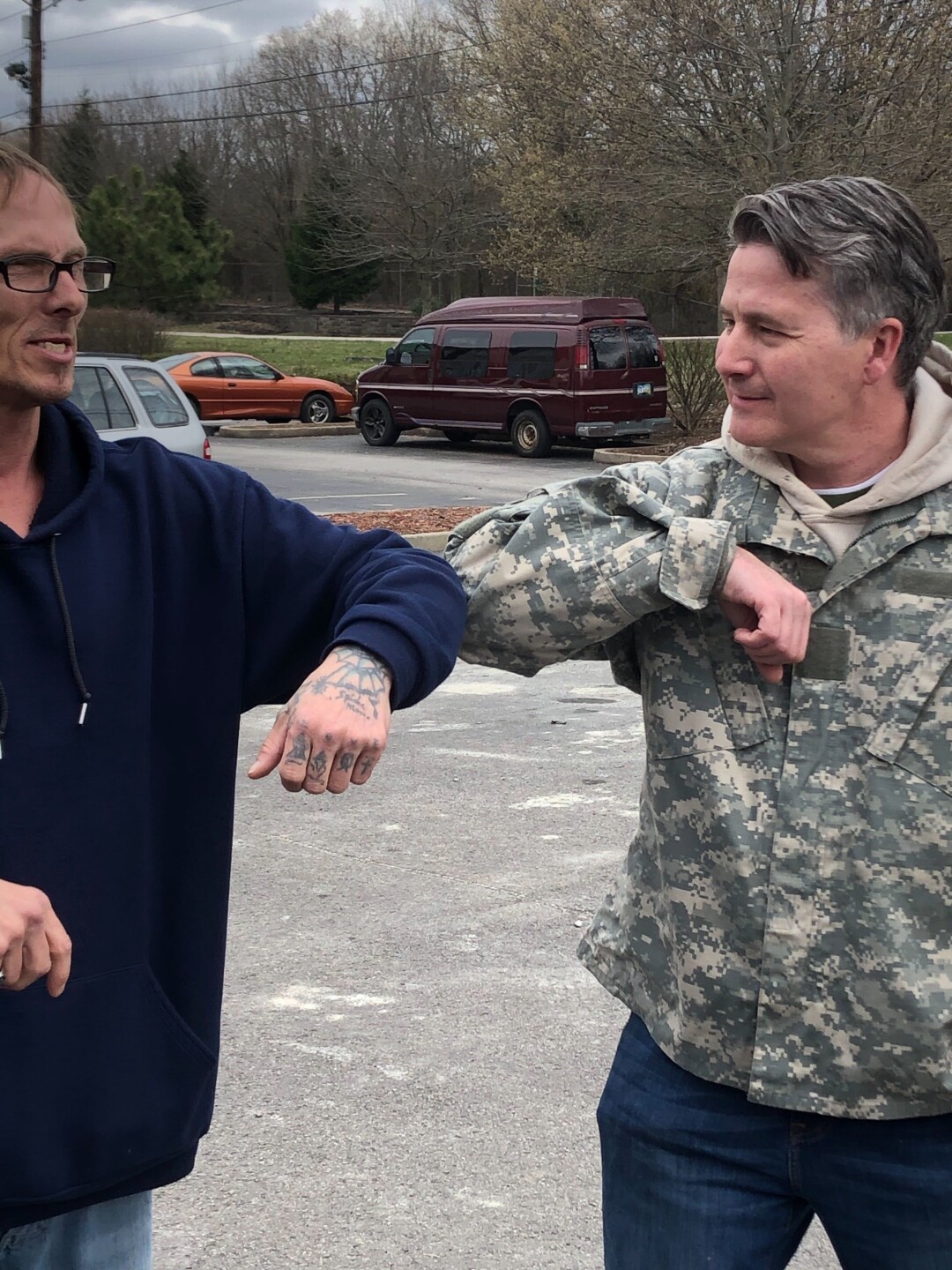Editor’s note: With our coronavirus coverage, our goal is not to alarm you but to equip you with the information you need. We will try to keep things in context and focus on helping you make decisions. See a list of resources and frequently asked questions at the end of this story.
FLORENCE, Ky. — Michelle Ronan is a cancer survivor who relies on a pacemaker to keep her heart beating.
But it’s not her own health that concerns Ronan as she faces homelessness in the midst of the coronavirus pandemic.
She’s more worried about Thomas “Tommy” Kunstman. He’s fighting stage four cancer that has spread from his kidney to his prostate, and he’s scheduled for a risky operation later this month.
“They gave him just a 30% chance of making it through his surgery. It worries me to death because I know that if something happens to him, I won’t have no one. And I know I won’t make it,” she said. “Because he’s my life.”
For at least the next night or two, the couple of 10 years is staying in a Florence hotel room paid for by the advocacy group Maslow’s Army.They’re among hundreds of people experiencing homelessness across Greater Cincinnati that face an increasingly uncertain future as the region tries to contain COVID-19’s spread.

“Shelters are doing – and people in shelters are doing – the best they can. They’re educating each other and making provisions to keep hands clean and do everything that they can,” said Josh Spring, executive director of the Greater Cincinnati Homeless Coalition. “But you can’t do the impossible.”
While nobody in the region’s homeless shelters has tested positive for COVID-19 yet, Spring said it’s bound to happen. So the homeless coalition has been working with city officials to identify locations where homeless people who are tested can self-quarantine to await results and where those who test positive can have a safe place to stay and keep others safe, too, Spring said.
“It’s just a matter of time,” he said. “We believe that these quarantine zones are necessary to ensure that when somebody gets sick with this, or when somebody is waiting to get the results of their testing, that sickness does not spread rapidly through our people.”
Cincinnati City Manager Patrick Duhaney referenced the work during a news conference Monday.
“We are currently looking to evaluate city facilities that could be converted into one-off isolation or quarantine areas, and we’re looking to have something in the next week or two,” Duhaney told reporters. “Most of the shelters have space to accommodate most of the homeless individuals. What they don’t necessarily have is the ability to maintain social spacing when individuals have been identified to either need to be quarantined or if they’re ill with COVID-19.”

Even with all that effort, though, there’s little doubt it has become even more difficult to be homeless in Greater Cincinnati.
‘We could be hurting more than helping’
The Emergency Shelter of Northern Kentucky in Covington ceased operating its winter shelter March 13, more than two weeks earlier than its typical March 31 closing date.
Executive Director Kim Webb said the difficult decision to close was the direct result of the pandemic.
“We could not effectively practice social distancing in that building,” Webb said of the shelter’s facility on Scott Boulevard. “It is rough. We feel like we’re in the business of taking care of our guests, and it was quickly becoming a reality that we could be hurting more than helping.”
Shelter operators across the country have been discussing whether homeless people actually could be safer outside – where they can spread out more – than in cramped shelters, she said.
The emergency shelter also has an employee who has had worrisome symptoms but has been exposed to the flu, she said. While the employee has not yet been tested for COVID-19, Webb said all those factors contributed to the decision to close early.
She said she hopes the shelter can open for daytime operations soon so people will have a place to shower, do laundry and charge their cell phones. But that will depend on the rapidly changing recommendations of state and local health department officials, Webb said.
Welcome House Northern Kentucky continues to provide shelter in Northern Kentucky. Its medical RV is providing food and drink, distributing information and taking people’s temperatures, too, Executive Director Danielle Amrine said in an email to WCPO.

“We are staying abreast of all the guidance coming out, and most of our staff are working from home,” she wrote. “We’re doing our best to help flatten the curve while caring for the most vulnerable.”
But many other places that homeless people rely upon have closed completely.
JACK Casino Cincinnati closed until further notice effective midnight March 13.
All 41 branches of the Public Library of Cincinnati and Hamilton County closed at 6 p.m. Friday and remain closed for at least seven days.
Kenton County Library events are canceled through March 22.
All Boone County Public Library locations are closed as of March 13.
And the region’s restaurants are closing for dine-in customers.
“All of the support services are shutting down for them,” said Brian Garry, chief advisor to Maslow’s Army. “Where are they supposed to sanitize? Where are they supposed to maintain hygiene and do all the things we’re supposed to be doing? Where are they supposed to self-quarantine? They can’t self-quarantine if they don’t have a home.”
Garry said Maslow’s Army is determined to continue its weekly outreach events, where volunteers distribute free meals and hygiene kits. The Sunday outreach ran out of hygiene kits before everyone in line could get one, he said.
‘Evictions will go through the roof’
“We need more resources. We just don’t have enough. Hand sanitizer, it could be life or death for someone who’s living on the streets,” he said. “We’re only as safe and protected as the least protected person on our streets, and they are not protected adequately. The people on our streets, they’re not protected at all.”
In addition to helping identify a place for homeless people to quarantine, Spring said the homeless coalition will push for other recommendations, too.
The coalition wants Hamilton County to put a moratorium on evictions, for example.
“With folks having to stay home with their children out of school, businesses being closed, people being sick, people are already struggling to pay their rents,” Spring said. “Evictions will go through the roof if we don’t put a moratorium on it and give time for people to catch up.”
The same is true of utility payments, he said, adding that the coalition also will call on local leaders to beef up personal protection for clinic staff members so they can test and treat people effectively.
Ronan and Kunstman said they’re just trying to survive until March 25 when they expect to receive their disability payments.
The couple became homeless several months ago after helping to pay for a number of family funerals in quick succession.
Kunstman’s son died in a motorcycle wreck, he said. Then his 5-year-old grandson, Brady, died a couple weeks before Christmas. His daughter, Ashlyn, overdosed on Christmas Eve.

“It’s drained us,” Ronan said.
Kunstman said he’s confident he and Ronan can get back on their feet after they get their disability benefits – as long as they survive until then.
“I’ve never been in a place like this before,” said Kunstman, an Army veteran who served in the Middle East. “It’s kind of scary.”
His immune system is weakened from the cancer, making the pandemic an even bigger concern.
“We just want to be able to have a roof over our heads so we can get out of this cold air,” Ronan said.
Until then, the couple is relying on their friends and their faith.
“I mean, I don’t want to go. I’m not old enough to go,” said Kunstman, who is 47.
“He says we’ve got to put it in God’s hands,” added Ronan, who is 57. “When it’s his turn, it’s his turn. All I can do it keep praying -- and thank Maslow’s Army.”

Jay Warren and Evan Millward contributed to this report.
Information about Maslow’s Army and how you can help is available online.
Information about the Greater Cincinnati Homeless Coalition and how you can contribute to the organization’s efforts it online, too.
Lucy May writes about the people, places and issues that define our region – to celebrate what makes the Tri-State great and shine a spotlight on issues we need to address. Poverty is an important focus for Lucy and WCPO. To reach Lucy, email lucy.may@wcpo.com. Follow her on Twitter @LucyMayCincy.
When you should get tested for COVID-19 in the Tri-State
Coronavirus outbreak declared a pandemic by the World Health Organization
Click here to see a full list of all schools that have made adjustments amid the coronavirus outbreak.
Click here to see a full list of all events canncelled or postponed due to coronavirus.
Find more coronavirus/COVID-19 hotlines and resources below:
Ohio
- Department of Health COVID-19 hotline: 833-4-ASK-ODH
- See ODH’s COVID-19 resources here.
Kentucky
- State COVID-19 hotline: 1-800-722-5725
- See the Cabinet for Health and Family Services coronavirus resource site here.
Indiana
- SDH Epidemiology Resource Center: (317) 233-7125 or (317) 233-1325 after hours, or e-mail epiresource@isdh.in.gov
- See more information for coronavirus in Indiana here.
What is coronavirus, COVID-19?
According to the World Health Organization, coronaviruses are "a large family of viruses that cause illness ranging from the common cold to more severe diseases such as Middle East Respiratory Syndrome (MERS-CoV) and Severe Acute Respiratory Syndrome (SARS-CoV).
A novel coronavirus, such as COVID-19, is a new strain that has not been previously identified in humans.
COVID-19 was first identified in December 2019 in Wuhan City, Hubei Province, China and has now been detected in 37 locations across the globe, including in the U.S., according to the CDC.
The CDC reports the initial patients in China have some link to a large seafood and live animal market, indicative of animal-to-person spread. A growing number of patients, however, did not report exposure to animal markets, indicating the disease is spreading person-to-person.
What are the symptoms? How does it spread?
Confirmed cases of COVID-19 have ranged from mild symptoms to severe illness and death, according to the CDC. Symptoms can include fever, cough, shortness of breath.
The CDC said symptoms could appear in as few as two days or as long as 14 days after exposure. It is similar to the incubation period for MERS.
Spread of the virus is thought to be mainly from person-to-person. Spread is between people who are in close contact with one another (within about six feet). Spread occurs via respiratory droplets produced when an infected person coughs or sneezes. The droplets can land in the mouths or noses of people who are nearby or possibly be inhaled into the lungs.
According to the CDC, it could be possible for a person to get COVID-19 by touching a surface or object that has the virus on it and then touching their own mouth, nose or possibly their eyes. This is not thought to be the main way the virus spreads, the CDC said.
The disease is most contagious when people are the sickest and showing the most symptoms, but it can be spread even at asymptomatic stages.



